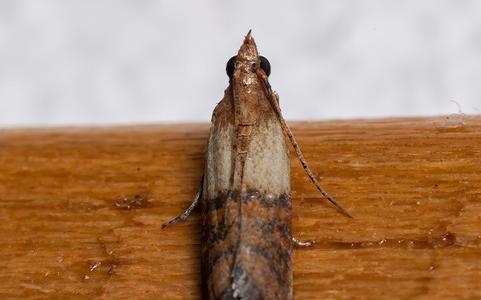
How Pantry Moths Get Into Maryland Pantries And How to Keep Them Out
11/26/2021
Pantry Moths are a common pest in Maryland pantries and can be incredibly difficult to remove without professional help. Engaging in moth preventio...
READ MORE >
02/28/2020
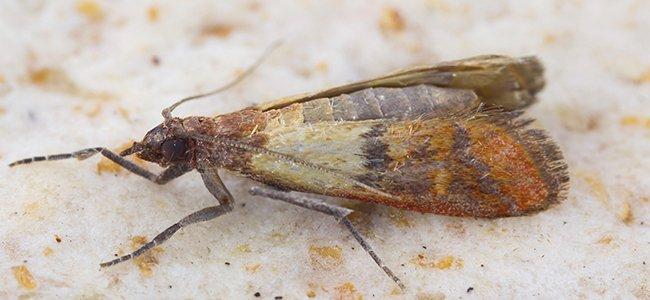
It’s early evening in the middle of the week. Dinnertime is coming, but you haven’t decided what to make, so you search your refrigerator and then your pantry, looking for inspiration. After deciding on something quick and easy, you gather your ingredients. Everything is going fine until you open up the bag of flour, dip a measuring cup inside, and pull out a heaping cup.
Something doesn’t look right. Upon closer inspection, you discover that there is something in your flour that is definitely not flour. A mishmash of small objects are clumped together and then, not far off from them- and to your horror- you see something moving. Your bag of flour has been infested by bugs.
Indian meal moths are a common type of pest that infest pantry food items all over the world. If you suspect they’ve infested your Potomac home, you likely have questions about what they are, what problems they cause, and most importantly, how to get rid of them. American Pest is here to help.
Indian meal moths received their name from a scientist who discovered them feeding on the corn meal of Indian corn. They are the most common of the pantry pests and can be found worldwide.
Adult Indian meal moths grow to about ¾ of an inch long, which is about the length of a penny, with wings that are slightly longer than their bodies. The inner part of the wings closest to the head are gray. This section of wing is separated by a dark horizontal mark from the outer part of the wings, which is a coppery red color with some darker markings. Adult Indian meal moths have grayish heads with two antennae.
Larval Indian meal moths grow to about ½ of an inch in length. Although the larvae are typically a milky, off-white color, they can vary between pink, brown, or even a greenish color, depending on their food source. Larval Indian meal moths have a brown head and five pairs of prolegs to move around as they eat and search for a suitable place to pupate.
Indian meal moth eggs are very small, only about half a millimeter in size. Eggs can be laid singularly or in clusters. They are typically laid directly in a larval food source.
When it comes to Indian meal moths, it’s not the adults you have to worry about. However, if you see adult Indian meal moths in your house, it’s an indication that you already have a problem. Here’s why:
Adult Indian meal moths do not eat. In fact, you’re more likely to find adult Indian meal moths in other parts of your Potomac home than you are to find them in your kitchen or pantry. Because of this, they are often mistaken for cloth-eating moths, but rest assured, they will not put holes in your clothing. If you find moths in your closet, along with holes in your clothing, you are not dealing with Indian meal moths.
If you do find adult Indian meal moths in your house, it means that they have grown from their larval state into adults and have laid their own eggs. When Indian meal moths lay eggs, they do so in your food supplies where the larvae, once hatched, will have a ready-to-eat food source.
Indian meal moth larvae are the ones that cause problems for Potomac homeowners. Although they won’t harm you or cause illness, they do contaminate your food, forcing you to have to throw it away. The way they contaminate your food is not only by being present in it and eating it, but also by spinning large amounts of silk in the food stores that collect egg shells, discarded skins from molting, and fecal matter.
While one contaminated bag of flour might not be that big of a deal, once Indian meal moths invade your pantry, they’ll lay eggs in any of the food items they can gain access to. Over time, this will cost you a lot of money in food waste.
Although they are called Indian meal moths, these pests eat and contaminate far more than corn meal. Indian meal moth larvae have a broad diet that includes corn meal, seeds, grains, dried fruit, nuts, candy, chocolate, dog food, bird seed, powdered milk, cereals, and more.
Although it’s possible for adult Indian meal moths to fly into your house from outdoors, this is the least likely scenario for how an Indian meal moth infestation begins in your Potomac home. You’re most likely to end up with an Indian meal moth infestation by bringing it home with you from the store.
Indian meal moths often infest food during the processing or packaging stages in manufacturing facilities. They can also end up in grocery stores and get into food packaging while there. If you unwittingly bring home a food item that has Indian meal moth eggs or larvae already in it, they’ll soon become adult Indian meal moths that lay more eggs in your pantry items, furthering the infestation.
How Can You Prevent Indian Meal Moths From Getting In Your Potomac Kitchen?
Knowing how an infestation begins is the first step in knowing how to prevent an infestation from occurring in your Potomac home. It’s important to realize that the food you bring home from the grocery store is potentially infested with Indian meal moth eggs or larvae. This knowledge will help you make smart choices while at the store, as well as when you get home.
When you’re grocery shopping, it’s important to inspect the packaging of the items that Indian meal moths are likely to infest before you put them into your cart. Any item that has a hole or damage to the packaging or is partially opened is not one you want to take home with you. Make sure that the items you choose are in boxes or bags that are free of damage and tightly closed.
When you get home, you should inspect the food items that could be potentially contaminated. Luckily, Indian meal moths are primarily surface feeders, so if there are any larvae present, you’ll likely see them at the top of the food when you open the package. If there is space in the box or bag for shifting, it’s possible that they’ll move down a few layers, so you may want to check a little deeper before deciding whether or not the food is truly free of Indian meal moths.
Once you have determined that an item is free of Indian meal moths, you’ll want to store it in an airtight container that Indian meal moths can’t penetrate. They are able to chew through both cardboard and thin plastic, so hard plastic or glass containers with tightly fitting lids are your best bet for protecting your food.
It’s important to keep new foods and old foods separate. For instance, don’t pour a new bag of dog food into a container that still has old food in it. If you do combine the foods, you may inadvertently transfer an infestation from one container to another. Instead, move the old food to the front of the shelf and put the new food behind it so that the old gets used first. Similarly, checking expiration dates on a regular basis and tossing out of date items is a good habit to get into, as pantry pests are sometimes attracted to older food items.
You’ll also want to keep your pantry clean of all spills and messes. The fewer opportunities that Indian meal moth larvae have to feed decreases their chances of reaching the stage where they can reproduce.
Indian meal moths thrive in humid environments, so keeping moisture levels down in your home, and especially in your pantry, is a must. Use dehumidifiers to reduce humidity and fans to promote good airflow.
Although Indian meal moths are more likely to get into your house through infested food, it’s wise to take precautions to prevent them from getting in from outside too. Keep doors shut when not in use. Ensure that open windows are covered with screens that are free of holes or tears. Seal any gaps that you find around your windows and doors.
If you look up how to get rid of an Indian meal moth infestation, you’ll probably find links to bait traps. These traps use pheromones to lure Indian meal moths to them. Once the Indian meal moths arrive at the trap, they get stuck in a sticky substance in the trap and can’t escape.
Although bait traps may prove mildly effective at capturing some Indian meal moths, they are unlikely to eliminate the entire infestation. Instead, they are better used as a monitoring device to help you determine how big or small your infestation is. A trap with a lot of captured Indian meal moths indicates a larger infestation. However, the fuller the trap gets, the less effective it becomes.
If you start seeing adult Indian meal moths in your home, regardless of where they are, you can be certain that at least some of the food items in your kitchen have eggs and larvae in them. You may be tempted to simply throw all your pantry items away and start all over again, but that’s not the best solution. First, it’s wasteful, since it’s possible that not every item in your pantry has Indian meal moth eggs or larvae in them. Second, it doesn’t take into account the fact that adult Indian meal moths are likely in other parts of your home. If you don’t eliminate the adults, they’ll simply lay eggs in your newly purchased food.
Instead, if you suspect you have an Indian meal moth infestation, it’s wise to contact the pest control professionals at American Pest. American Pest has years of experience treating the Indian meal moth infestations of other homes in Potomac, as well as around Maryland, Washington D.C., and Northern Virginia. Because of our experience, we have honed our skills and treatment methods in order to provide you with the best, most effective Indian meal moth treatment available.
If Indian meal moths have gotten into your home, get them out with the help of American Pest. Contact us to schedule an appointment, and we’ll make sure to get rid of your Indian meal moth problem permanently.

11/26/2021
Pantry Moths are a common pest in Maryland pantries and can be incredibly difficult to remove without professional help. Engaging in moth preventio...
READ MORE >
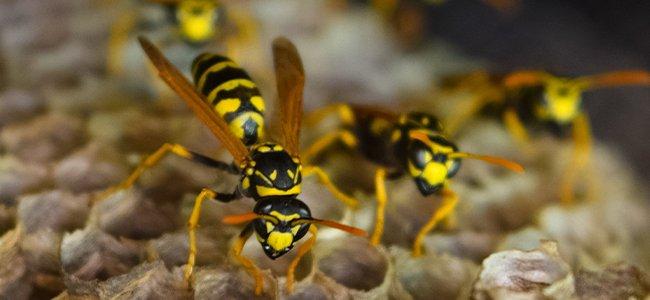
08/23/2021
Stinging insects are extremely dangerous pests here in Washington D.C. For aggressive varieties such as wasps, home and business owners find themse...
READ MORE >
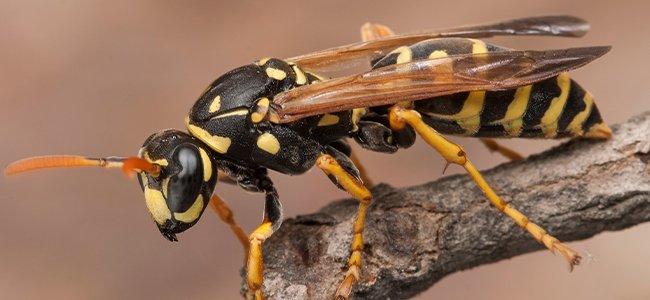
06/27/2021
Some pests are so harmless that you almost feel bad for getting rid of them. Wasps, on the other hand, only cause relief when they’re gone. S...
READ MORE >
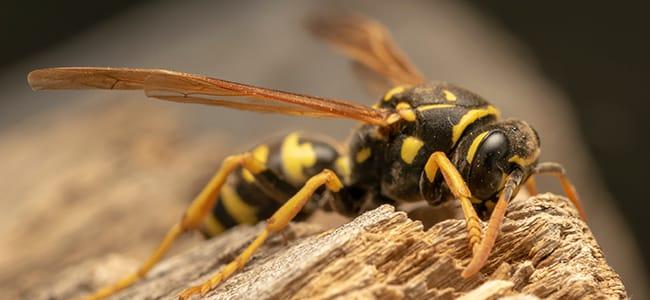
04/09/2021
Keeping your yard a safe and pleasant place to spend time, free of wasps and hornets, doesn’t just happen by itself. It takes thought and act...
READ MORE >

Protect your home and family from nuisance and potentially damaging pests with a Preferred Care home pest control plan. Starting at $49/month

Don't let the bed bugs bite a second longer. Contact American Pest for the most comprehensive bed bug control in the industry. Learn More

Our certified rodent control pros will put an end to your frustration by getting rid of rats and mice inside your home. Learn More

Say goodbye to wood-destroying termites in your home when you contact American Pest for expert termite control. Learn More

Trust American Pest to deliver professional backyard tick control services that are guaranteed to get results. Learn More

Don't spend the warm-weather season indoors, find out how American Pest's professional treatments get rid of mosquitoes. Learn More
Fill out the form and recieve feedback in less than 5 minutes. For immediate service please call.